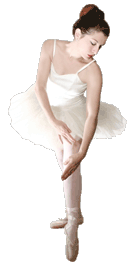Postmodern dance, like other postmodern art forms, attempts to reintroduce everyday culture into the perceived void created by the modern art movement. The modern dance movement endeavored to pare theatrical dance down to basic technique. Some experts define postmodern dance as a distinct dance movement that was started by the Judson Dance Theater and lasted only until the 1970s. Many theatrical dance pieces created after the 1970s can be viewed as postmodern by a wider definition.
The modern dance art form was pioneered by Isadora Duncan and matured under the influence of Ruth St. Denis, Martha Graham and Merce Cunningham, to name a few. Modern dance, viewed in the overall light of the modern art theory, sought to purify artistic expression by concentrating on technique and downplaying the influence of society and culture. Modern dance theory is still pervasive in the dance world.

If viewed alongside other postmodern art forms, including the visual arts and literature, postmodern dance is more than art movement restricted to the 1960s and 1970s. Postmodern dance relies on references to mass culture and everyday experience to create art,and many dance pieces fall into this category. Modern dance theory can be looked at as being "exclusive," while postmodern dance theory is "inclusive."
Many credit the Judson Dance Theater with developing postmodern dance. In 1962 a group of dancers rebelled against modern dance theory by performing different dance experiments at the Old Judson Church. They named themselves the Judson Dance Theater and theorized that everyday movement could be a form of dance. They also believed that anyone could be a dancer if they had the desire, and no formal training was necessary. The Judson Dance Theater broke up in 1964, but a second group headed up by other experimental dancers, most notably Twyla Tharp, was started and performed until the 1970s.
Twyla Tharp, a renowned choreographer, eventually moved on to become a more mainstream dancer, but her involvement with popular culture still places much of her work squarely into postmodernism’s broader definition. She used popular music with her choreography and created dances for movies such as Hair and Ragtime. Her work included ideas mined from mass culture, modern society and other art forms.
Some dancers still define themselves as being postmodern. For example, in 2011, Ananya Chatterjea, a self-proclaimed postmodern choreographer, performed a piece along with other dancers at the University of Minnesota. Borrowing on the legacy started by the Judson Dance Theatre, the dancers used everyday, random body movements in their piece. Response to Chatterjea’s choreography included anger, shock and curiosity. Some students, who were not dancers, also wanted to participate in the dance.
